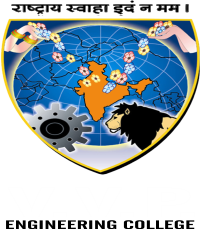Name of Faculty: Dr. Tejas Patalia
Name of Innovative Method Adopted: Collaborative Learning
Name of Course: Computer Networks
Topic covered: Local Area Network
Goals for Adopting the Collaborative Learning method: To make students practically aware with hardware components required to design local area network. To calculate the overall costing of local area network with specific requirements in terms of location, computer systems and other hardware components.
Description of the Methodology: A single problem is divided into large groups of students. Each group is assigned a specific task. Students discuss within the group and clear the concepts. They work collaboratively. Each group submits its final work and conclusion. Final outcomes of all groups are combined to solve the problem.
Significance of the method: By applying collaborative learning students gain knowledge of designing local area network.
Name of Faculty: Prof. Nivid Limbasiya
Name of Innovative Method Adopted: Project Based Learning
Name of Course: Mobile Application Development
Topic Covered: Android Applications
Goals for Adopting the Mini Project method: In this method, students learn about mobile application development using android. After the development of the application students can publish this application in the Google play store.
Description of the Methodology: A group of five members will be created to carry out the mini project, then the problem is distributed among students and groups will create a working model of the android application.
Significance of the method: Using this method students can understand the live market of android application and he/she could become a good developer of android application.
Name of Faculty: Prof. Girish Mulchandani and Dr. Kamal Sutaria
Name of Innovative Method Adopted: Role Play
Name of Course: Software Engineering
Topic covered: Requirement Gathering
Goals for Adopting the Role Play method: Requirement gathering in Software Engineering is a crucial part to design a software. With Role play student collect the Real requirements and get clarity about the importance of requirements
Description of the Methodology: In this activity one team of students play the role of Client and one team of students play as the Development team. Client team put up their idea/requirements and development team work on client requirements. Based on requirement, development team design Software Requirement Specification document. Once it’s prepared, they present the same to the client and the client team validates the requirement.
Significance of the method: While developing software it’s important to have the knowledge about all functionalities from all aspects because it might be possible that one member has limited knowledge which can be improved by performing this kind of activity. Students get involved throughout the discussion and get real requirements.
Name of Faculty: Dr. Kamal Sutaria
Name of Innovative Method Adopted: Cooperative Learning
Name of Course: Compiler Design
Topic covered: Phases of Compiler
Goals for adopting the Cooperative Learning method: Role of the compiler is important for the students. To get an idea for working of compiler is very important. With this group activity students get knowledge about the compilation process. One can work in a team as well as perform individually, also getting concepts of phases easily clear using modular technique.
Description of the Methodology: There are six groups (one group per phase of Compiler). Each group performs phase activities and sends output / result to the next group. By receiving input from the previous group, they perform their role and passes updated information to the next one, till the last group (code generator) generates target code.
Significance of the method: Using this exercise students can easily understand the working of various phases of the compiler.
Name of Faculty: Prof. Komil Vora
Name of Innovative Method Adopted: Case Studies
Name of Course: Artificial Intelligence
Topic covered: State Space Search
Goals for Adopting the Case Studies method: Case studies are created and used as a tool for analysis and discussion.
Description of the Methodology: Case studies is an instructional method that refers to assigned scenarios based on situations in which students observe, analyze, record, implement, conclude, summarize, or recommend.
Significance of the method: Students learn to identify between critical and extraneous factors and develop realistic solutions of complex problems. They could learn from one another. For teachers, it offers an opportunity to provide instructions while conducting formative evaluation.
Name of Faculty: Dr. Tejas Patalia
Name of Innovative Method Adopted: Role Play
Name of Course: Programming for Problem Solving
Topic covered: Nested for Loop
Goals for Adopting the Role Play method: To make students logically aware about the working of nested for loop.
Description of the Methodology: A pair of two students is selected. Each student is assigned a specific role. Students perform their role in front of all other students. Finally, the concept is cleared to all the students.
Significance of the method:
By role play method students could cleared concept and logic of nested for loop.

